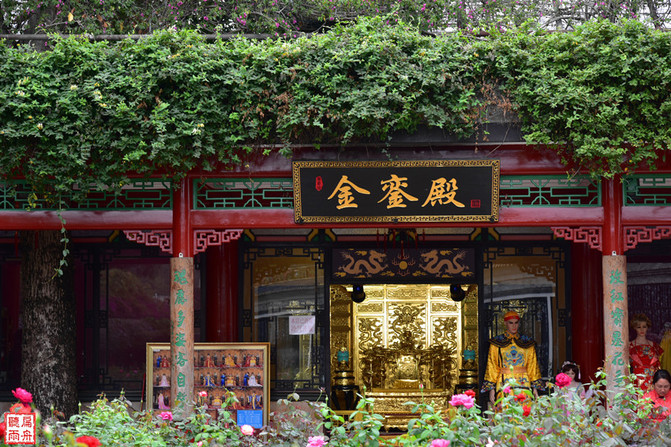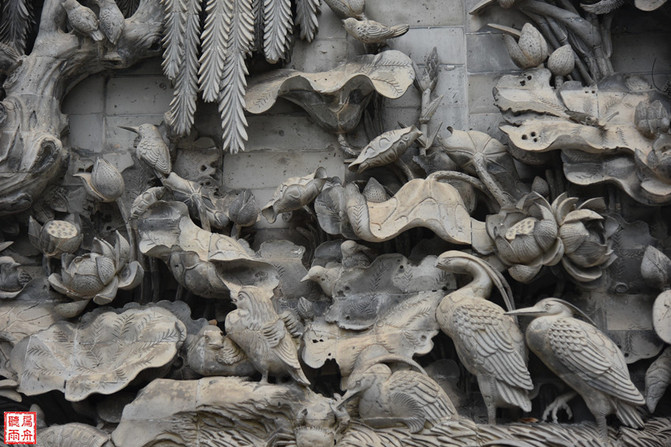There is a Baomo Garden that has been brought back to life in Panyu, Guangzhou
I have long heard that there is a very famous Baomo Garden in Panyu, Guangzhou, so I'll go and have a look.

Baomo Garden is located in Zini Village, Shawan Town, Panyu District, Guangzhou City, Guangdong Province. It was built in the late Qing Dynasty. In the 1950s, customs were changed and the four old ones were destroyed. In 1995, it was restored and rebuilt, which took eight years and was finally completed.

This garden integrates Qing official culture, Lingnan garden art, Lingnan ancient architecture, and Pearl River Delta water town characteristics. It is now a national AAAA tourist attraction.

During the late Qing Dynasty and the early Republic of China, this garden was originally called Bao Xiangfu and later called Baomo Garden. Although Bao Gong had never been here, the people here admired Bao Qingtian's loyal, upright and fearless character of making decisions for the people, and they still built Bao Xiangfu here. Legend has it that one year the river was flooded, and a piece of black wood drifted to the shore. People put it back into the river. Unexpectedly, the water downstream was so heavy that it flowed back, and the wood was sent back. This situation was repeated again and again, and people dared not neglect it, so they sacrificed the black wood. Later, people carved this black wood into a statue of Bao Qingtian and built Bao Xiangfu here.

After the original Baomo Garden was destroyed, basically all the cultural relics in the park disappeared, leaving only a stone plaque of Baomo Garden, which is placed in front of today's Baomo Hall.


In today's Baomo Garden, there are Banzhi Hall, Baomo Hall, Qingxin Pavilion, Longtu Hall, Thousand Elephant Corridor, etc. It is divided into 8 scenic spots, more than 40 scenic spots, and more than 30 stone bridges. Pottery sculptures, gray sculptures, stone carvings, brick carvings, wood carvings, stone carvings, color paintings, porcelain inlaid and other art works are displayed in various exhibition halls in the park.






The green marsh river and living water system in the park extends in all directions, and the water is full of leisurely koi carp chasing and playing, like drifting brocade.



From time to time, you can still see some royal demeanor. The "jade covered with gold" glazed tiles cover the roof, vermilion lacquer columns, and carved beams and painted buildings are elegant and magnificent, as if they have entered a royal garden.




I wonder how much money it costs to sit on the golden chair in the throne room. The foreign models outside the temple have all been dressed in royal clothes, so it will not be cheap.

The "Spiritual Monkey Sacrifice" covered in golden light is also very domineering.



In contrast, the kind-looking Guanyin Bodhisattva is always low-key and amiable.


The most amazing works in the park are the large-scale embossed porcelain mural "Riverside Picture during Qingming Festival" and the huge brick carving "Tuyan and Singing Wall", which has been listed as the "Best in Guinness in the Great World."
The "Qingming Riverside Picture" is enlarged tenfold compared with the Qingming Riverside Picture collected by the Palace Museum. It is 62.8 meters long and 7.3 meters wide. It is made up of more than 1300 porcelain blocks. It reproduces the Central Plains and Northern Song Dynasties in today's southern China. The style of Kyoto.

Facing the main entrance,"Tuyan and Singing Wall" also shows Lingnan's superb brick carving skills. Every detail is carefully carved, and the majestic momentum is full of lifelike, making people stop and linger.




In Panyu, Guangzhou, there is a Baomo Garden that has been brought back to life.
Previous Article:Summer water play strategy for "being afraid of stars"! "Amway" Guangzhou Sunac Water World
